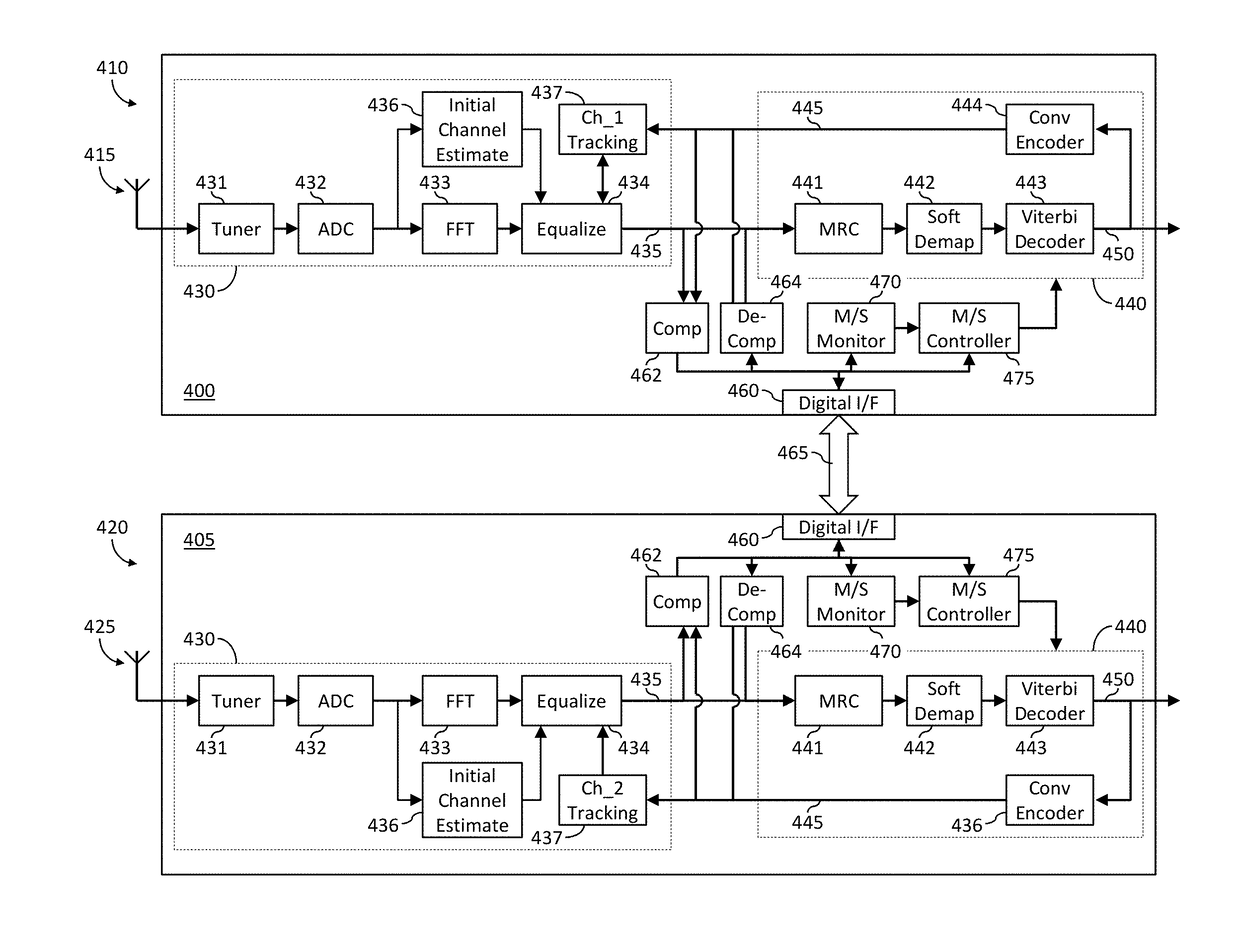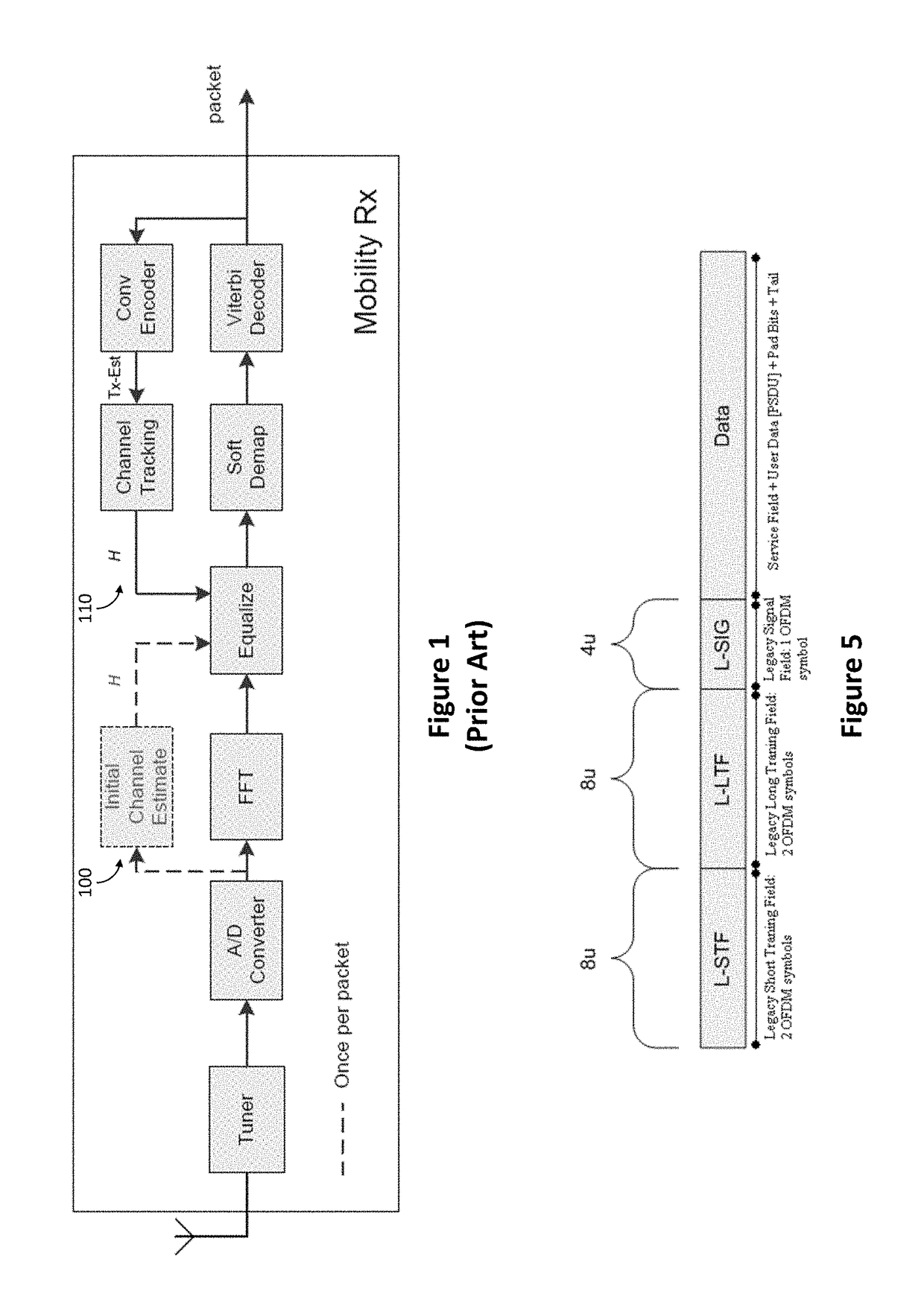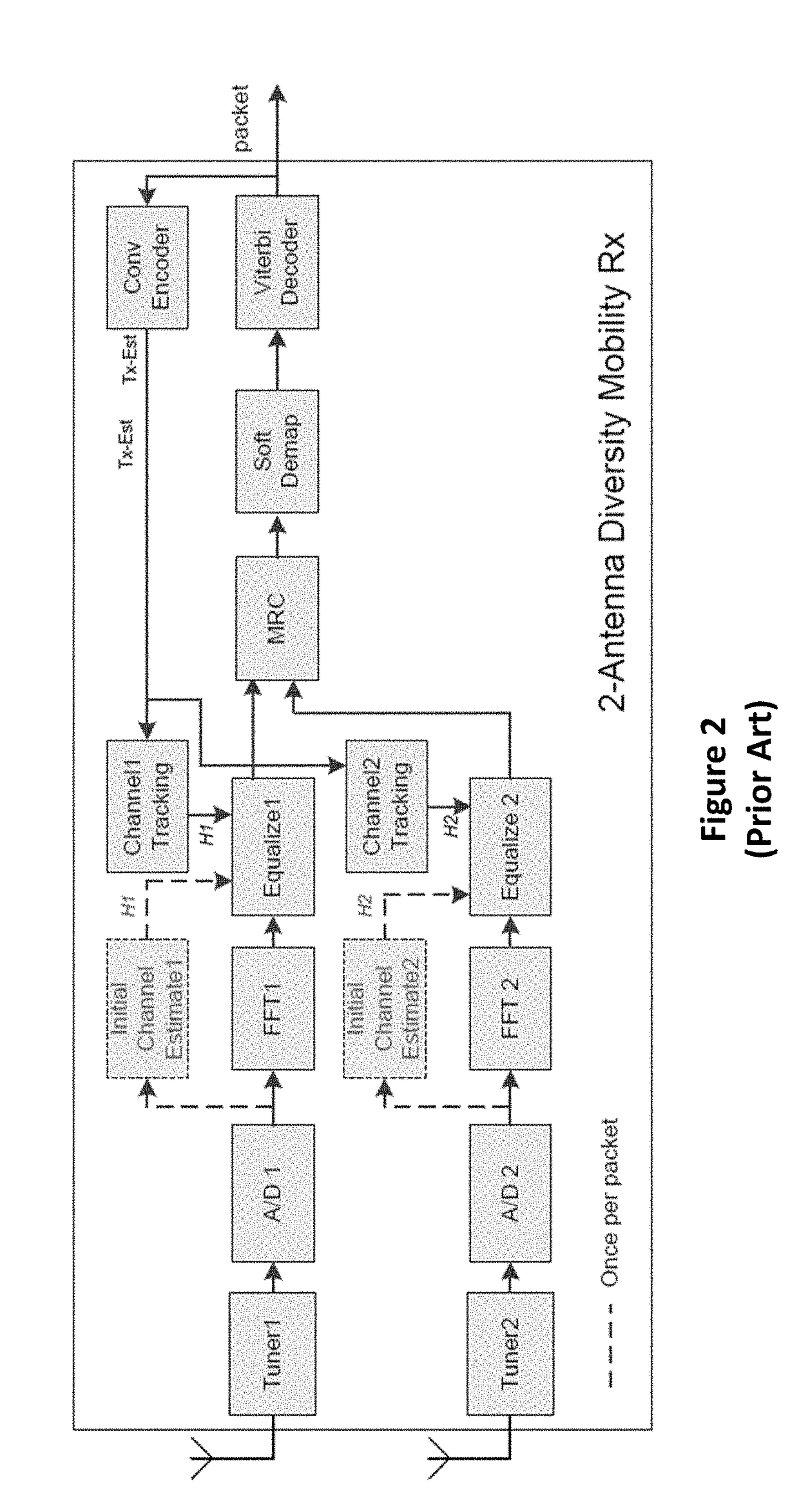Method and apparatus for dynamically assigning master/slave roles within a distributed antenna diversity receiver apparatus
a receiver and master/slave technology, applied in the field of method and apparatus for dynamic assignment of master/slave roles within a distributed antenna diversity receiver apparatus, can solve the problems of underutilized ic design in all, noise added to the received signal by the receiver circuit, and transmission errors
- Summary
- Abstract
- Description
- Claims
- Application Information
AI Technical Summary
Benefits of technology
Problems solved by technology
Method used
Image
Examples
Embodiment Construction
[0029]The present invention will now be described with reference to the accompanying drawings in which there are illustrated example embodiments. However, it will be appreciated that the present invention is not limited to the specific embodiments herein described and as illustrated in the accompanying drawings, and various modifications and alternatives may be made without detracting from the inventive concept.
[0030]According to some example embodiments, there is proposed a method and apparatus for dynamically configuring master and slave receivers within a distributed antenna diversity receiver apparatus. For example, when a slave signal has a higher SNR than the master signal, the logical notion of master-slave is reversed. Accordingly, it is proposed to detect when the master / slave assignment of receivers is no longer appropriate, for example due to changes in the transmission channels, and to dynamically re-assign the master and slave roles as appropriate.
[0031]Referring now to...
PUM
 Login to View More
Login to View More Abstract
Description
Claims
Application Information
 Login to View More
Login to View More - R&D
- Intellectual Property
- Life Sciences
- Materials
- Tech Scout
- Unparalleled Data Quality
- Higher Quality Content
- 60% Fewer Hallucinations
Browse by: Latest US Patents, China's latest patents, Technical Efficacy Thesaurus, Application Domain, Technology Topic, Popular Technical Reports.
© 2025 PatSnap. All rights reserved.Legal|Privacy policy|Modern Slavery Act Transparency Statement|Sitemap|About US| Contact US: help@patsnap.com



